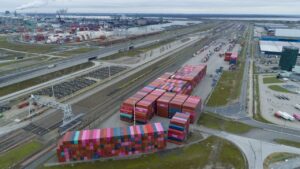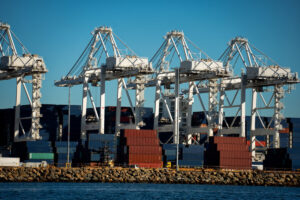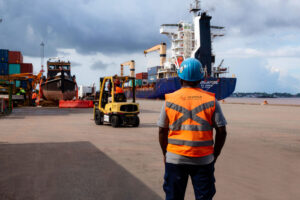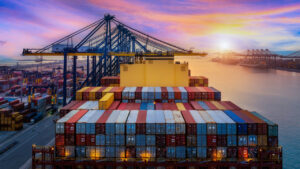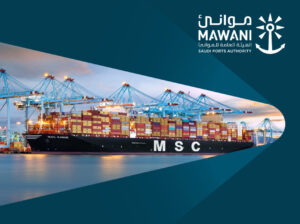The changing dynamics of shipping vessels across the world is one of the greatest challenges facing port operators in investing in shoreside power, a sustainability planner at the Port of Los Angeles has told PTI.
In an interview with PTI, Christopher Cannon, Director of Environmental Management at the SoCAL port, said future investment in Alternative Maritime Power (AMP) berthing will need to be dynamic to accommodate larger ships as demand on cargo shipping continues to soar.
Over the past two decades, the capacity of container ships has tripled. Major ports like LA handle vessels that can hold a staggering 23,000 TEU.
Cannon added that future investment in the Port of Los Angeles and major international terminals using shoreside power could require multiple plug-in points or mobile plug-in locations to accommodate further growth in the size of vessels.
“Currently, the way shoreside power technology works is through a receptacle in vaults,” Cannon said. Berthing vessels can plug into the receptacle, and draw power from the port itself, reducing power used on the ship and reducing carbon emissions as a result.
“The problem is the ships are getting bigger, so they don’t always line up with the vaults. A problem is trying to get the ship to be able to line up with the vault if you’ve got a big berth.
“Now, all of a sudden, the location is not quite right. One of the new challenges then is to try and find a way for these vaults to move to otherwise be to get the plug-in to occur in different locations.”
The Port of Los Angeles is seen as an industry trailblazer in AMP. Hosting more shoreside power berths than anywhere else in the world with 25, Cannon and his team are looking to expand its cold ironing capabilities – but says the significant investment required can be a major challenge facing ports considering investment in the technologies.
Cannon did say that global investment in shoreside power is going in a “positive direction”.
“It’s expensive to outfit the berths. That has always been a challenge not only for us, but for all ports.
“Ships are gradually starting to retrofit for shore power and we’re really happy that the shipping industry is making that transition. But the challenge for ports is to outfit the berths and to handle the cost.”


